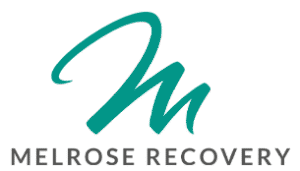Fentanyl Detox San Clemente
Melrose Recovery, a safe, secure Fentanyl treatment and rehab recovery center, in the hills of Los Angeles
Fentanyl Detox San Clemente – At Melrose Recovery, we believe everyone deserves a second chance. Our foundation is built on lived experience—where struggles with substance use no longer define us, but instead fuel our mission to help others reclaim their lives.
We offer transformative recovery rooted in acceptance, connection, and support. Our purpose is to guide individuals facing alcohol and drug addiction toward lasting freedom, empowering them to break the cycle and build a brighter future.
Since 2015, Melrose Recovery is your pathway to transformation and healing. Located in the vibrant heart of Los Angeles, California just moments away from iconic Hollywood and the picturesque beaches of Santa Monica and Venice, we are dedicated to changing lives. Since 2015, our comprehensive Fentanyl treatment approach encompasses detoxification, residential care, and aftercare services, all tailored to meet each individual’s unique needs on their recovery journey.
Led by a compassionate team of addiction professionals and counselors, we offer a range of therapy programs designed to support and guide individuals suffering opioid addiction toward lasting sobriety. At Melrose Recovery, we believe in the power of personalized care and diverse treatment options to pave the way for a brighter future.
Fentanyl has gained a grim reputation in the United States due to its role in the ongoing overdose crisis. While it is a legitimate prescription medication used to manage severe pain particularly for patients with advanced illnesses it is also manufactured and distributed illegally. Illicit fentanyl is often mixed with cocaine, marijuana and other street drugs, sometimes without the user’s knowledge. This mixing of street drugs greatly increases the risk of overdose. Based on the latest available data from the CDC (Centers For Disease Control and Prevention), an estimated 48,422 people in the United States died from fentanyl overdose in 2024.
Fentanyl Deaths in The US
Fentanyl is the number 1 killer of people 18 – 49 years old in the United States
About Fentanyl
What Is Fentanyl?
Fentanyl is a powerful synthetic opioid—approximately 50 to 100 times stronger than morphine—prescribed to manage severe pain that does not respond to other opioid medications. It is available under brand names such as Actiq, Duragesic, and Subsys, and can be administered through nasal sprays, lozenges, sublingual tablets, or injections.
While fentanyl has legitimate medical uses, it is increasingly produced illegally for street sales. Illicit fentanyl is often mixed into heroin, cocaine, MDMA (ecstasy), methamphetamine, and counterfeit pills—frequently without the user’s knowledge. This hidden contamination has fueled a sharp rise in overdose deaths in the United States since 2013.
Is Fentanyl Addictive?
Yes. Fentanyl is one of the most addictive opioids. Even when prescribed, it can lead to dependence, and misuse greatly increases the risk. Because it is so strong and acts so quickly, it can create a powerful high that encourages repeated use.
Dependence can start fast, and stopping suddenly can cause intense withdrawal symptoms. This cycle often leads to addiction.
Signs of Addiction – Health Effects
Short-Term Effects of Fentanyl
Fentanyl reduces the body’s perception of pain, but it can also be misused for the intense rush of pleasure—or euphoria—it can produce. Along with this high, fentanyl use can cause dangerous short-term effects, including:
- Sedation or extreme relaxation
- Drowsiness or sleepiness
- Confusion or disorientation
- Nausea
- Slowed or shallow breathing
- Loss of consciousness
Even short-term use can be risky, as slowed breathing and loss of consciousness can quickly become life-threatening.
Signs of a Fentanyl Overdose
Fentanyl overdoses share many of the same warning signs as other opioid overdoses. These can include:
- Slowed, shallow, or stopped breathing
- Tiny, pinpoint pupils
- Extreme drowsiness, unresponsiveness, or loss of consciousness
- Cold, pale, or bluish skin
- Gurgling or choking noises
- Limp or weak muscles
How to Respond in an Overdose Emergency
-
Call 911 right away.
-
If you have naloxone (Narcan), use it immediately to help restore breathing.
-
If the person doesn’t regain consciousness or breathe normally within 2–3 minutes, give a second dose.
-
Place them in the recovery position—on their side with the top knee bent—to prevent choking.
-
Stay with them until medical help arrives.
Acting quickly can mean the difference between life and death.
Fentanyl-Laced Drugs
Many people who use drugs have no intention of taking fentanyl—but may still be exposed to it through contaminated supplies. Studies, such as those conducted in Rhode Island, show that heroin is often mixed with fentanyl, even when users do not seek it out. While the demand for fentanyl in these cases is low, the rate of unintentional exposure is high. This hidden presence greatly increases the risk of overdose.
Long-Term Effects of Fentanyl Misuse
Prolonged use of fentanyl—or any opioid—can lead to a wide range of serious physical and mental health problems. These may include:
- Severe constipation
- Increased impulsivity and poor decision-making
- Depression and other mood disorders
- Hormonal imbalances in both men and women
- Sexual dysfunction in men
- Irregular menstrual cycles in women
- Higher risk of bone fractures, especially in older adults
- Greater risk of heart attack
- Weakened immune system
- Severe physical dependence
- Opioid use disorder (addiction)
Over time, these effects can significantly damage overall health and quality of life, making early intervention and treatment critical.
Fentanyl Withdrawal & Detox
When someone stops taking fentanyl—or other opioids—withdrawal symptoms can begin within just a few hours. Common symptoms include:
- Muscle and bone pain
- Diarrhea
- Vomiting
- Chills
- Insomnia
- Intense cravings for opioids
Fentanyl withdrawal can be extremely uncomfortable and challenging. Many people relapse simply to avoid these symptoms.
Medical Detox
In a medical detox program, trained professionals can provide medications to ease withdrawal symptoms, manage cravings, and monitor for any medical complications—helping ensure the process is as safe and comfortable as possible.
Rehab for Fentanyl Addiction
Treatment for fentanyl addiction can be inpatient or outpatient:
- Inpatient Rehab – 24/7 care in a residential setting, with individual and group therapy, structure, and healthy routines.
Outpatient Rehab – Treatment during the day with the ability to live at home. Levels of care include:
- Partial Hospitalization (PHP): About 6 hours per day, 5 or more days per week.
- Intensive Outpatient (IOP): 3-hour sessions, 3–5 days per week.
- Standard Outpatient: The least intensive, often used as ongoing support after higher levels of care.
Medication-Assisted Treatment (MAT)
Medications such as methadone, buprenorphine, or naltrexone—combined with behavioral therapies—are proven to be effective in treating opioid use disorder and supporting long-term recovery.


Frequently Asked Questions About Fentanyl
What is fentanyl?
Fentanyl is a synthetic opioid used medically to treat severe pain, but it is also produced illegally and is linked to high overdose risk.
How strong is fentanyl compared to morphine?
Fentanyl is about 50 to 100 times stronger than morphine.
What medical conditions is fentanyl prescribed for?
It’s prescribed for severe pain, such as advanced cancer pain or pain after major surgery.
What forms does fentanyl come in?
It is available as patches, lozenges, nasal sprays, injections, and dissolvable tablets.
What are common brand names for fentanyl?
Actiq, Duragesic, and Subsys are some well-known brands.
How is fentanyl used in hospitals?
It’s used to manage pain during and after surgery, and for patients with severe chronic pain unrelieved by other opioids.
How quickly does fentanyl work?
Fentanyl acts rapidly, often within minutes, depending on the method of administration.
How long does fentanyl stay in your system?
It can be detected for hours to days, depending on the test used and individual metabolism.
What is illicitly manufactured fentanyl (IMF)?
IMF is fentanyl made illegally in labs and sold on the black market, often mixed with other drugs.
Why do dealers mix fentanyl into other drugs?
It’s cheap, potent, and increases the perceived strength of the product, but it also raises overdose risk.
What drugs is fentanyl commonly mixed into?
Heroin, cocaine, meth, MDMA, and counterfeit pills are frequently contaminated.
How can fentanyl be taken accidentally?
By using drugs contaminated with fentanyl without knowing it.
How deadly is fentanyl?
A very small amount—just 2 milligrams—can be fatal.
How does fentanyl cause overdoses?
It depresses the central nervous system, slowing or stopping breathing.
What are the signs of fentanyl overdose?
Slowed or stopped breathing, pinpoint pupils, unresponsiveness, cold or bluish skin, and limpness.
What should you do if you suspect a fentanyl overdose?
Call 911, give naloxone if available, and stay with the person until help arrives.
What is naloxone?
Naloxone is a medication that can rapidly reverse opioid overdoses, including fentanyl.
How do you give naloxone?
It can be given as a nasal spray or injection.
Can fentanyl overdoses require more than one dose of naloxone?
Yes, because fentanyl is so potent, multiple doses may be needed.
Is fentanyl addictive?
Yes, fentanyl has a high risk of addiction and dependence.
Why is fentanyl so addictive?
Its potency and rapid onset can create an intense but short-lived high, encouraging repeated use.
What are withdrawal symptoms from fentanyl?
Muscle aches, diarrhea, vomiting, chills, insomnia, and intense cravings.
How soon do withdrawal symptoms start?
Within a few hours after the last dose.
How long do withdrawal symptoms last?
They can last from several days to over a week, depending on usage.
What is medication-assisted treatment (MAT) for fentanyl addiction?
MAT uses medications like methadone, buprenorphine, or naltrexone alongside counseling.
Is MAT effective for fentanyl addiction? – Fentanyl Detox San Clemente
Yes, MAT has been shown to reduce cravings and lower overdose risk.
What are the long-term effects of fentanyl misuse? – Fentanyl Detox San Clemente
Hormonal imbalances, depression, constipation, sexual dysfunction, and weakened immunity.
Can fentanyl cause brain damage? – Fentanyl Detox San Clemente
Yes, from oxygen deprivation during overdose or repeated respiratory depression.
Does fentanyl affect mental health? – Fentanyl Detox San Clemente
It can contribute to depression, anxiety, and mood instability.
Can fentanyl cause heart problems? – Fentanyl Detox San Clemente
Long-term misuse can increase the risk of heart attack.
How can fentanyl use affect relationships? – Fentanyl Detox San Clemente
Addiction can cause strain, conflict, and loss of trust between loved ones.
How does fentanyl affect pregnancy? – Fentanyl Detox San Clemente
It can cause withdrawal in newborns, low birth weight, and other complications.
Can fentanyl be absorbed through the skin? – Fentanyl Detox San Clemente
Medical patches are designed for skin absorption, but casual contact with powder is unlikely to cause overdose—though caution is still advised.
Is fentanyl illegal? – Fentanyl Detox San Clemente
Medical fentanyl is legal with a prescription, but non-prescribed possession or sale is illegal.
How is fentanyl classified in the U.S.? – Fentanyl Detox San Clemente
It is a Schedule II controlled substance under the Controlled Substances Act.
How does fentanyl compare to heroin? – Fentanyl Detox San Clemente
It’s significantly more potent and carries a higher overdose risk.
How much fentanyl is lethal? – Fentanyl Detox San Clemente
About 2 milligrams can be deadly for most people.
Can you overdose from touching fentanyl powder? – Fentanyl Detox San Clemente
Accidental skin contact is unlikely to cause overdose, but accidental inhalation or ingestion is dangerous.
How common are fentanyl overdoses in the U.S.? – Fentanyl Detox San Clemente
Fentanyl is now involved in the majority of opioid overdose deaths.
When did fentanyl overdoses start to surge? – Fentanyl Detox San Clemente
The sharp increase began around 2013 with the rise of illicitly manufactured fentanyl.
How does fentanyl affect breathing? – Fentanyl Detox San Clemente
It slows and can stop breathing entirely, leading to death without prompt treatment.
Why is fentanyl more dangerous than other opioids? – Fentanyl Detox San Clemente
Its potency leaves little margin for error in dosing.
Can fentanyl use lead to tolerance? – Fentanyl Detox San Clemente
Yes, users often need more over time to achieve the same effect.
Can fentanyl cause coma? – Fentanyl Detox San Clemente
Yes, severe respiratory depression can lead to coma.
How can fentanyl use impact the immune system? – Fentanyl Detox San Clemente
Long-term use can weaken immune function, increasing infection risk.
What is the safest way to stop using fentanyl? – Fentanyl Detox San Clemente
Under medical supervision in a detox program.
Can fentanyl be detected in standard drug tests? – Fentanyl Detox San Clemente
Yes, though some tests require specific screening for synthetic opioids.
Are fentanyl test strips legal? – Fentanyl Detox San Clemente
Laws vary by state, but many areas allow them for harm reduction purposes.
Health Insurance PPO Plans For Fentanyl Detox San Clemente
PPO Plans for Melrose Recovery Drug Rehab in Los Angeles, California
Finding effective treatment for drug and alcohol addiction is one of the most important steps in the recovery journey. For many individuals and families, navigating how to pay for rehab can be a major concern. Fortunately, Melrose Recovery, a leading addiction treatment center in Los Angeles, California, accepts a wide range of PPO (Preferred Provider Organization) health insurance plans, making high-quality care more accessible and affordable.
Why Choose Melrose Recovery? – Fentanyl Detox San Clemente
Melrose Recovery offers a structured and supportive environment for individuals seeking recovery from substance use disorders. Their programs include:
- Medical Detox
- Residential Inpatient Treatment
- Dual Diagnosis Treatment
- Individual and Group Therapy
- Aftercare Planning
What sets Melrose apart is their client-centered approach, experienced clinical team, and commitment to long-term recovery. Located in Los Angeles, the facility provides a safe and comfortable setting to begin healing.
What Are PPO Insurance Plans? – Fentanyl Detox San Clemente
PPO insurance plans allow policyholders to see healthcare providers both inside and outside of their insurance network, usually without a referral. When it comes to addiction treatment, this flexibility can be vital.
Key PPO benefits for rehab coverage:
- Out-of-network options: You can still receive coverage for facilities not directly in your provider’s network.
- No referral needed: You don’t need a referral from a primary care physician to start treatment.
- More provider choices: PPO plans give you more freedom to choose the rehab facility that fits your needs.
Does Melrose Recovery Accept My PPO Insurance? – Fentanyl Detox San Clemente
Melrose Recovery works with most major PPO insurance providers, including but not limited to:
- Aetna
- AmeriHealth
- Anthem
- Blue Cross Blue Shield
- Cigna
- Hawaii Medical Service Association (HMSA)
- Humana
- Kaiser Permanente
- Medical Mutual
- Premera Blue Cross
- UnitedHealthcare
Melrose Recovery’s admissions team is available 24 hours a day 714-442-7782 to verify your insurance benefits quickly and confidentially. This process helps determine your coverage, deductible, co-pays, and out-of-pocket maximums before starting treatment.
Verifying Insurance Coverage – Fentanyl Detox San Clemente
To find out if your PPO insurance plan covers treatment at Melrose Recovery:
-
Call Melrose Recovery directly – Speak with an admissions specialist who can walk you through the insurance verification process.
-
Submit insurance info online – Many treatment centers, including Melrose, offer a secure online form for quick verification.
-
Check with your insurer – You can also contact your insurance company directly and ask about your behavioral health benefits.
The Importance of Getting Help – Fentanyl Detox San Clemente
Addiction is a chronic and progressive condition—but with the right support, recovery is absolutely possible. By accepting a variety of PPO plans, Melrose Recovery helps reduce financial barriers to care, so individuals and families can focus on healing rather than costs.
Take the First Step Today – Fentanyl Detox San Clemente
If you or a loved one is struggling with addiction, don’t wait. Melrose Recovery in Los Angeles offers compassionate, evidence-based care in a supportive setting. With PPO insurance coverage, treatment may be more affordable than you think.
Contact Melrose Recovery today to learn more about admissions and insurance verification. Your path to recovery can start now.
Insurance Coverage Made Easy at Melrose Recovery
At Melrose Recovery, we understand that navigating insurance coverage can be overwhelming. That’s why we’re committed to making the process as seamless as possible for you. We proudly work with major insurance providers, including Aetna, Beacon, BCBS, Cigna, Horizon Insurance, and Multiplan. If you don’t see your insurance provider listed, don’t worry – our dedicated team is here to assist you in exploring your options and finding a solution that works for you. Your journey to recovery starts here, with support every step of the way.
Get Started on Your Personal Journey to Addiction Recovery
Before you can get to aftercare, you have to take the first step. Overcoming addiction is a genuine choice when you decide to quit and enlist the help of therapist. Contact the addiction treatment specialist at Melrose Recovery to start the rehab admission paperwork and process.
Licenses and Accreditations






